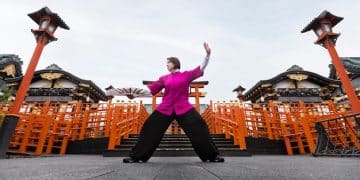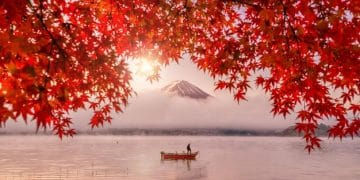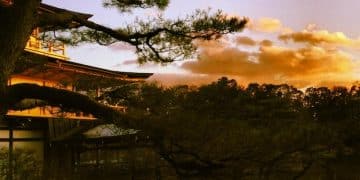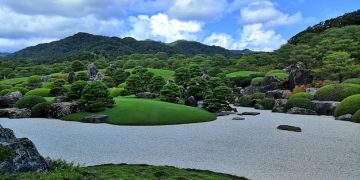Cherry Blossom Season in Japan: US Traveler’s Tips
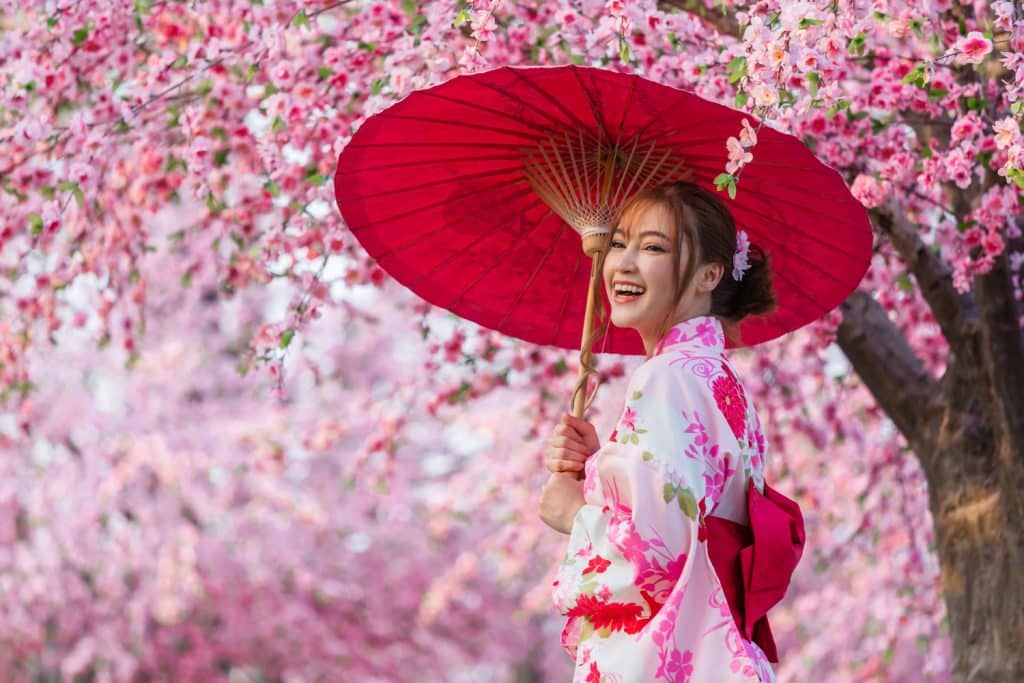
Cherry Blossom Season in Japan is one of those once-in-a-lifetime journeys that travelers dream of. For U.S. visitors in 2025, it’s the perfect chance to witness spring draping temples, riversides, and bustling city streets in a sea of delicate pink.
Every year, this fleeting spectacle transforms Japan into a living painting. The blossoms create an atmosphere of celebration, where locals and visitors gather under the trees to enjoy hanami, the centuries-old tradition of flower viewing.
Planning your trip requires more than just picking dates. From bloom forecasts to the best spots for viewing, knowing how to navigate this seasonal wonder ensures you’ll experience the magic at its peak.
Understanding the Elusive Sakura Bloom Forecast
Planning a trip around the Cherry Blossom Season in Japan is a unique challenge, primarily because the bloom schedule is influenced by weather patterns and varies significantly across regions.
Unlike fixed holidays, the sakura bloom is a natural phenomenon, making precise timing essential for those aiming to experience its peak.
Typically, cherry blossoms begin their march from the warmer south of Japan, appearing first in Okinawa in late January, and slowly progressing northward, concluding in Hokkaido by early May.
For travelers from the US, understanding this geographical progression is key to pinpointing the best time and location for their visit in 2025.
Even within a specific region, microclimates can lead to slight variations in bloom times. Cities located near mountains or coastlines might experience different peak bloom dates compared to those in central plains.
This nuance demands a flexible itinerary or a focus on broader regional predictions.
- Early Bloomers: Southern Honshu and Shikoku often see blooms in late March.
- Peak Season: Tokyo, Kyoto, and Osaka typically hit their peak in early April.
- Late Bloomers: Northern Japan, including Tohoku and Hokkaido, may not bloom until late April or early May.
Monitoring reputable cherry blossom forecast websites, often updated monthly and then weekly as the season approaches, becomes a vital tool.
These forecasts aggregate data on past bloom dates, current weather trends, and expert meteorological analysis to provide the most accurate predictions available.
The “full bloom” period, when the trees are most spectacular, usually lasts only about a week. This narrow window underscores the importance of diligent research and potentially last-minute adjustments to travel plans.
Given the popularity, especially among US travelers aiming for 2025, early preparation combined with an adaptive mindset is crucial.
Ultimately, experiencing the cherry blossoms is about embracing nature’s unpredictable artistry. While planning aids significantly, a part of the adventure lies in the slight uncertainty and the joyful discovery of the sakura’s ephemeral beauty.
Strategic Booking: Flights and Accommodations
Securing flights and accommodations well in advance is paramount for anyone planning a cherry blossom trip to Japan.
The season’s immense popularity translates directly into heightened demand and prices, making early booking not just a recommendation but a necessity.
A common mistake is underestimating how quickly both airfare and hotel rooms fill up. Many travelers begin planning an entire year in advance, with prime locations and desirable flight times becoming scarce several months out from the bloom season.
Airfare Acquisition: Timing is Everything
For flights from the US to Japan, the sweet spot for booking often falls between six to twelve months prior to departure.
Airlines typically release their flight schedules this far in advance, and those who book early are more likely to secure better rates and preferred routes. Waiting too long can lead to significantly higher prices or less convenient itineraries.
Consider major hubs like Tokyo (Narita or Haneda) or Osaka (Kansai International). Being flexible with travel dates, even by a day or two, can sometimes yield considerable savings. Subscribe to airline newsletters for alerts on sales, though deeply discounted fares for peak season are rare.
Comparing prices across various airlines and using flight comparison websites can help identify the most economical options. Factor in potential luggage fees and seat selection costs when evaluating the total price of a ticket.
Early booking also provides ample time to sort out visa requirements, if applicable, and other travel necessities.
Accommodations are another critical piece of the puzzle. Hotels in major cities like Tokyo, Kyoto, and Osaka often see bookings open up a year in advance and fill up rapidly.
Options range from traditional ryokans to modern hotels and guesthouses, catering to various budgets. However, regardless of the type, competition is fierce.
Consider hotels near public transportation hubs to simplify travel once in Japan. Proximity to subway or train stations can save valuable time and enhance the overall travel experience, especially during peak tourist season when mobility is key.
Researching neighborhoods known for their access to cherry blossom viewing spots can also be advantageous, though expect higher prices in these areas.
For those seeking more unique experiences, independent ryokans or boutique hotels might offer charm, but often have fewer rooms, making them even harder to book.
Websites specializing in Japanese accommodation can be useful resources. Finalizing these bookings early allows travelers to focus on the exciting aspects of planning their itinerary.
Navigating Japan’s Bustling Cities During Sakura Season
Japan’s major cities transform into vibrant hubs of activity during the cherry blossom season. While the allure is undeniable, the sheer volume of both domestic and international tourists, particularly from the US, can present challenges.
Effective navigation and crowd management become essential skills for a smooth trip.
Public transportation in Japan is renowned for its efficiency and punctuality. The train systems, especially in cities like Tokyo and Kyoto, are extensive and provide the most effective way to move around.
Purchasing an IC card (like Suica or Pasmo) upon arrival simplifies fares and removes the need to buy individual tickets for each journey.
Maximizing Your City Experience
To avoid the densest crowds, consider visiting popular spots early in the morning or later in the afternoon. Iconic parks and temples, while stunning, can become overwhelming midday.
Some locations even offer evening illuminations of the cherry blossoms, known as ‘yozakura‘, providing a different, equally enchanting viewing experience with potentially fewer people.
- Tokyo: Ueno Park, Shinjuku Gyoen, Chidorigafuchi Moat.
- Kyoto: Maruyama Park, Philosopher’s Path, Arashiyama.
- Osaka: Osaka Castle Park, Kema Sakuranomiya Park.
Dining during the cherry blossom season can also be competitive. Many popular restaurants, especially those in prime viewing areas, will have long wait times.
It is advisable to make reservations for dinner, especially for groups or for highly recommended establishments.
Alternatively, exploring less tourist-centric neighborhoods can lead to delightful culinary discoveries with shorter waits.
Walking is an excellent way to discover hidden gems and enjoy the atmosphere, but comfortable shoes are a must. Many of Japan’s most beautiful cherry blossom viewing spots involve significant walking, often through parks or along riverbanks.
Consider packing light and being prepared for varying spring temperatures, which can range from cool mornings to mild afternoons.
Understanding basic Japanese etiquette, such as removing shoes indoors and bowing as a sign of respect, can also enhance interactions.
While many Japanese are accustomed to tourists, showing an effort to respect local customs is always appreciated and contributes to a more enriching experience.
Navigating the crowds with patience and a positive attitude will ensure the cherry blossom viewing remains a joyous event.
Cultural Immersion: More Than Just Petals
While the visual spectacle of cherry blossoms is undeniably captivating, Japanese culture offers a profound depth that extends far beyond the petals.
For US travelers, embracing the full cultural spectrum means delving into traditions, festivals, and activities that complement the sakura experience, creating a richer, more meaningful journey.
Hanami, the practice of picnicking under cherry blossom trees, is central to the season. It’s a cherished ritual, bringing families, friends, and colleagues together to eat, drink, and socialize amidst the blossoms.
Participating in a hanami picnic, even briefly, offers a direct insight into this beloved national pastime.
Experiencing Traditional Arts and Crafts
Beyond hanami, exploring traditional Japanese arts can deepen understanding. Opportunities abound to witness or participate in tea ceremonies (chado), a meditative practice embodying harmony and respect.
Calligraphy (shodo) and flower arranging (ikebana) are other ancient forms that reflect Japan’s aesthetic sensibilities and connection to nature, offering hands-on experiences for those interested.
During the Cherry Blossom Season in Japan, many travelers immerse themselves in cultural experiences that go beyond admiring the blossoms.
One of the most cherished is the tea ceremony, where visitors can learn about its spiritual and social significance while enjoying the calm atmosphere it creates.
Another unforgettable activity is renting a kimono and strolling through historic districts. Walking in traditional attire among blooming cherry trees offers a sense of connection with Japan’s timeless heritage, making the trip even more memorable.
Temple and shrine visits also play a central role during this season. Surrounded by petals, these sacred sites reveal the spiritual heart of Japan, blending natural beauty with centuries-old traditions that continue to captivate visitors.
Many historical sites and gardens host special events or illuminations during the cherry blossom season, providing unique perspectives.
Visiting a traditional Japanese garden, meticulously designed to evoke tranquility and natural beauty, becomes even more magical when framed by blooming sakura.
Local festivals (matsuri) are often held during spring, celebrating various aspects of Japanese culture and ancient traditions.
These festivals can offer vibrant parades, traditional performances, and unique street foods, providing a lively contrast to the serene beauty of the blossoms.
Researching local event calendars for the specific dates of your 2025 visit can unveil these hidden cultural gems.
Connecting with the local culinary scene is also a crucial part of cultural immersion. Beyond the well-known sushi and ramen, spring brings seasonal delicacies.
Sakura mochi (rice cakes wrapped in cherry blossom leaves) and other sakura-infused treats are popular seasonal delights, embodying the transient beauty of the blossoms even in food.
Engaging with the local population, perhaps practicing a few basic Japanese phrases, can open doors to authentic experiences.
Whether it’s a casual chat with a shopkeeper or seeking recommendations from a friendly local, these interactions contribute to a more profound and memorable cultural exchange beyond just admiring the flowers.
Budgeting for a Cherry Blossom Trip
A cherry blossom trip to Japan, while undeniably a dream for many US travelers, requires careful financial planning. The peak season inevitably drives up costs for flights, accommodation, and sometimes even local transport and attractions.
A well-structured budget can help manage expenses and ensure a comfortable, enjoyable experience.
Flights typically represent one of the largest expenses. As mentioned, booking well in advance can help secure more favorable rates.
However, expect prices to be higher than during off-peak seasons due to demand. Direct flights usually cost more than those with layovers, so consider your time versus cost preference.
Accommodation Expenses and Alternatives
Accommodation prices spike significantly during sakura season. Depending on your preference for hotels, ryokans, or guesthouses, daily rates can range widely.
For budget-conscious travelers, options like business hotels (often smaller but efficient), hostels, or capsule hotels can provide more affordable alternatives, particularly outside the most central tourist areas.
- Airfare: Budget for a higher-than-average round-trip ticket.
- Lodging: Research different accommodation types and book early for best rates.
- Transportation: Consider a Japan Rail Pass if travelling extensively.
Transportation within Japan is exceptionally efficient but can add up, especially if you plan to visit multiple cities.
A Japan Rail Pass might be a cost-effective solution for extensive inter-city travel, offering unlimited rides on JR lines for a set period. For city-specific travel, daily subway passes or IC cards are usually sufficient.
Food expenses can be managed by balancing restaurants with more economical options. Convenience stores (konbini) offer a surprisingly good selection of ready-to-eat meals, snacks, and drinks at affordable prices.
Supermarkets also provide opportunities for budget-friendly meals. When dining out, look for lunch specials, which are often more economical than dinner.
Activities and attractions, while sometimes requiring an entrance fee, are often reasonably priced. Many of the best cherry blossom viewing spots, such as public parks, are free.
However, visiting temples, shrines, or specific gardens might incur small fees. Factor in a daily allowance for these entertainment costs, plus a buffer for souvenirs and unexpected expenses.
Finally, consider travel insurance.
While an additional upfront cost, it can provide invaluable peace of mind, covering potential cancellations, medical emergencies, or lost luggage, especially for a significant international trip during a busy period like the Cherry Blossom Season in Japan.
Beyond the Main Cities: Exploring Regional Sakura
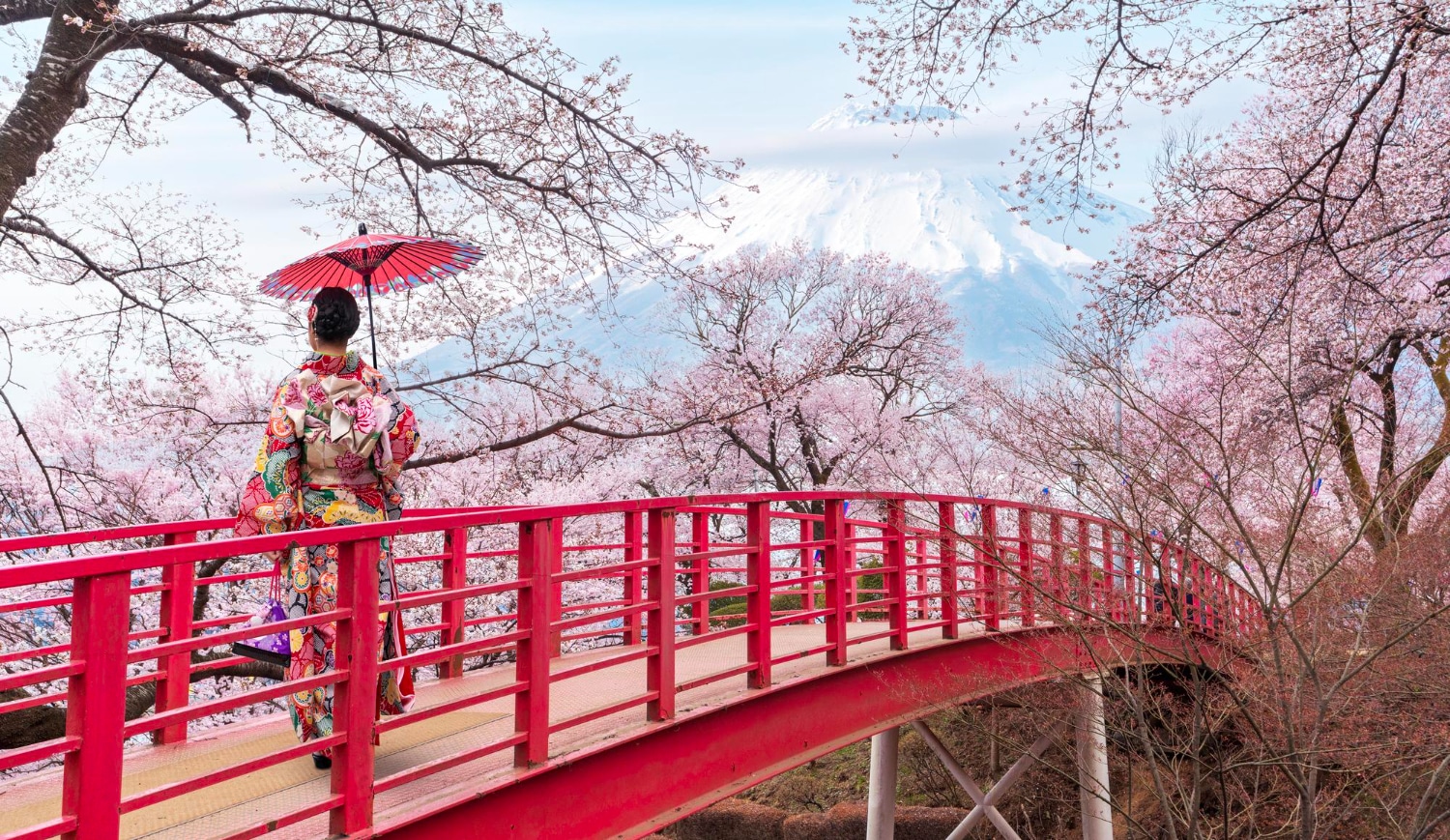
While Tokyo, Kyoto, and Osaka offer stunning cherry blossom experiences, focusing solely on these major cities means missing out on equally, if not more, enchanting regional sakura spots.
For US travelers planning their trip, venturing beyond the well-trodden paths can offer unique perspectives, fewer crowds, and often a more authentic cultural connection.
The bloom schedule naturally dictates a regional exploration, as different areas peak at different times.
If your travel dates don’t perfectly align with the peak in Tokyo, for instance, there’s a strong chance another region will be in full bloom or approaching it.
Hidden Gems and Local Experiences
Consider regions like Tohoku in northern Honshu, which blooms later than the Kanto or Kansai regions.
Places like Hirosaki Castle Park in Aomori Prefecture are famous for their magnificent cherry blossoms, offering boat rides through petal-filled moats and stunning views of Mount Iwaki.
It’s a visually spectacular alternative, often with fewer tourists compared to Kyoto.
In the northern region of Tohoku, travelers can enjoy the late blooms that brighten prefectures like Aomori and Iwate, offering a chance to experience the cherry blossoms after the peak season in other parts of Japan.
Moving to Chubu, the landscapes around Mount Fuji provide some of the most iconic views of cherry blossoms, where the pink petals perfectly frame Japan’s most famous mountain. This area is ideal for capturing postcard-worthy memories.
On the island of Shikoku, the season reveals a different charm, with historical castles surrounded by early blossoms. These sites allow visitors to appreciate both the beauty of spring and the rich heritage of the region.
Venturing into these regional areas also provides a chance to experience different facets of Japanese culture.
The local cuisine, dialects, and traditions can vary significantly from the major cities, offering a deeper and more diverse understanding of the country.
Accommodations might also be more readily available and less expensive than in the prime urban centers.
Ultimately, diversifying your itinerary to include regional cherry blossom spots can transform a memorable trip into an extraordinary adventure.
It allows for a broader perspective of Japan’s natural beauty and cultural richness, ensuring a truly immersive experience for US travelers.
Packing Essentials for Japan’s Spring Climate
Packing for Cherry Blossom Season in Japan requires careful consideration, as spring weather can be quite variable.
For US travelers planning their trip, being prepared for a range of temperatures and conditions will ensure comfort and adaptability, allowing full enjoyment of the sakura spectacle without weather-related concerns.
Daytime temperatures in March and April can range from cool to mild, typically between 40°F (5°C) and 65°F (18°C), but evenings can be chilly, especially if you plan to attend any ‘yozakura’ (night illumination) events. Rain is also a possibility, so layering is key.
Clothing and Footwear Considerations
Start with a base layer of comfortable, breathable fabrics. Add a medium layer, such as a long-sleeved shirt or light sweater.
For the outer layer, a versatile, waterproof, and windproof jacket is highly recommended. This will protect against unexpected showers and chilly breezes without being overly bulky.
- Layers: Pack clothing that can be easily added or removed to suit temperature changes.
- Waterproofs: A light, packable umbrella and a waterproof jacket are essential.
Comfortable walking shoes are non-negotiable. You’ll likely be doing a lot of walking, exploring parks, temples, and city streets. Opt for shoes with good support and cushioning.
If you plan to visit traditional inns or private homes where shoes are removed, slip-on shoes can be convenient.
Don’t forget accessories. A lightweight scarf can provide warmth on cooler evenings or protection from the sun.
Sunglasses are useful for bright days, and a small backpack or day bag will be invaluable for carrying essentials like water, snacks, a camera, and any purchased souvenirs.
Beyond clothing, essential travel documents like your passport, visa (if required), and flight/hotel confirmations should be easily accessible. Consider having digital copies on your phone or in the cloud as a backup.
Carrying a portable power bank for your electronic devices is also a smart move, especially for long days of sightseeing and photo-taking.
Basic toiletries, any necessary medications, and a universal travel adapter for recharging electronics complete the practical packing list.
By packing smart and being prepared for varying spring conditions, US travelers can navigate Cherry Blossom Season in Japan with ease and focus on immersing themselves in the unparalleled beauty of the sakura.
| Key Point | Brief Description |
|---|---|
| 🌸 Bloom Timing | Varies regionally; early booking and flexible dates are key. |
| ✈️ Booking Strategy | Secure flights & accommodations 6-12 months ahead for best rates. |
| 🏙️ City Navigation | Utilize public transport; visit popular spots early to avoid crowds. |
| 🎒 Packing Essentials | Layers, waterproofs, and comfortable walking shoes are critical for spring. |
Frequently Asked Questions About Cherry Blossom Travel
The peak cherry blossom season typically runs from late March to early April in major cities like Tokyo and Kyoto. However, it varies by region, starting in the south in January and ending in the north by early May. For precise timing, it’s best to consult forecasts closer to the dates.
Given the immense popularity of the cherry blossom season, US travelers should aim to book flights and accommodations between 6 to 12 months in advance for their trip. This ensures better availability, competitive pricing, and preferred travel times, especially for prime locations.
Beyond Tokyo, Kyoto, and Osaka, consider regional gems. Hirosaki Castle Park in Tohoku is renowned for its late blooms and stunning scenery. Kanazawa’s Kenrokuen Garden offers a serene experience. Exploring these areas can provide unique photos and a less crowded encounter with the sakura.
Spring in Japan can be unpredictable. Pack layers including a comfortable base, a light sweater, and a waterproof, windproof outer jacket. Comfortable walking shoes are essential. An umbrella and sunglasses are also highly recommended to prepare for varying conditions throughout your trip.
Absolutely. Engage in hanami picnics, participate in tea ceremonies, or try on traditional kimonos. Explore local festivals often held during spring, visit ancient temples and shrines, and savor seasonal delicacies like sakura mochi. These activities offer deeper cultural immersion beyond just admiring the flowers.
Conclusion
Planning a trip to experience Cherry Blossom Season in Japan is an endeavor that promises unparalleled beauty and profound cultural insights.
By strategically planning ahead for flights and accommodation, understanding the nuances of the bloom forecast, and preparing for the dynamic urban and regional landscapes, travelers can maximize their experience.
This ephemeral spectacle, combined with Japan’s rich traditions and efficient infrastructure, offers a journey that is both visually stunning and deeply enriching, ensuring memories that will last far beyond the falling petals of spring.
Did you like the content? Continue reading our website and read: US shopper’s guide: Avoid fake brands in Japan.

